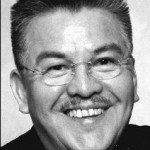Published Monday, March 4, 2013, 12:01 a.m.in the Everett Herald, Mudrakers Blog: Digging into all kinds of gardening
By Steve Smith
March is a very busy month in a gardener’s world. There is much to do, so let’s get with it.
Lawns: I continue to be amazed at how well organic lawn foods work. Yes, they seem expensive if you just look at the price on the bag, but they last three to four times as long as the commercial ones and improve the soil. Maybe it is time for you to kick the Scotts Turf Builder habit and start using these all natural and organic feeds. Most independent garden centers will have a turf expert on staff that can help guide you through this transition.
Pruning: Yes, March is the month to trim fruit trees, tidy up hedges, cut back ornamental grasses, massacre the roses and shape up the wisteria and clematis. While we have had some dry days already, I have to admit that I don’t get these chores done until this month, so don’t feel bad if you too still need to do a bit of chopping.
Perennials: Be careful this month when you are tromping through the flower beds. The tender new shoots of perennials are starting to pop through and the last thing you want to do is squash them.
Veggie gardens: It’s time to get the veggie garden in shape. Remove any weeds and spread lime, organic fertilizer and compost and till it all together. You will be ready to plant all the cool season crops like potatoes, carrots, peas, radishes, onions, lettuce, spinach, cabbage, broccoli and cauliflower — to name just a few. Buy a sheet of “row cover” to protect your babies on the really chilly nights. This is also the time to plant perennial veggies like rhubarb and asparagus.
Small fruits and berries: Blue berries, raspberries, black berries and strawberries are all itching to be planted this month. They are still dormant and will slip into your garden now and never skip a beat. Grapes and Kiwis, currants and gooseberries can also be planted now. Always use some compost and organic starter fertilizer when you are planting new plants.
Fruit trees: Like I mentioned above, this is the consummate month to prune and spray your fruit trees with copper and oil. It is also a perfect time to plant a few new ones as well. Most trees these days are on dwarf or mini-dwarf root stocks that keep them 10-12 feet tall.
Bulbs: Summer blooming bulbs are now in stock, such as dahlias, gladiolas and lilies. Purchase them this month for the best selection, though I would recommend holding off until April to plant them.
Weeds: Don’t let those weeds get ahead of you and go to seed. My favorite weeding tool is the Hula-Hoe. It is quick and efficient. Remove the weeds and get the ground covered immediately with a layer of compost and some Preen and you will be miles ahead of the weeding game.
Educational opportunity: Two options on this front. Come see me at the Everett Home and Garden Show on Friday to Sunday. On Saturday come to the nursery at 10 a.m. to learn about growing roses in the Northwest. Hope to see you at one or both of these events.
Steve Smith is owner of Sunnyside Nursery in Marysville and can be reached online at info@sunnysidenursery.net



















